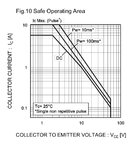kanonka
Member level 1
My question is - how to find acceptable short circuit reaction time?
I have a pulse generator with max Vout - 40V. Normal maximum current is 80 mA. If user shorts output, I have very simple protection circuit (basically, one NPN that drives base of the power NPN to ground when shorting occurs). LTSpice gives 35 ns before voltage completely comes down. Max current at that moment - 1.8A.
Is 35 ns sufficient in this case to not fry my components? How would I know?
I have a pulse generator with max Vout - 40V. Normal maximum current is 80 mA. If user shorts output, I have very simple protection circuit (basically, one NPN that drives base of the power NPN to ground when shorting occurs). LTSpice gives 35 ns before voltage completely comes down. Max current at that moment - 1.8A.
Is 35 ns sufficient in this case to not fry my components? How would I know?
